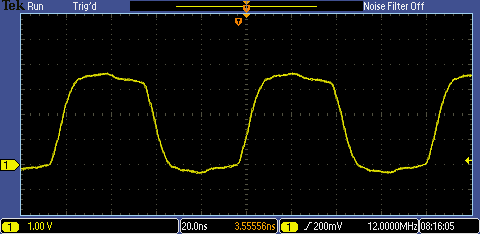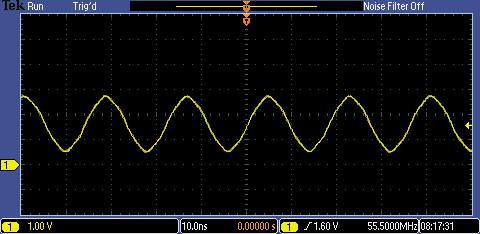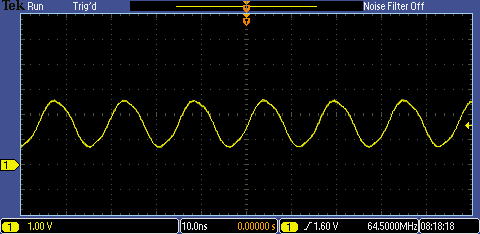iCE40 Ring Oscillation Test Notes
Dependencies
Install instructions for all of the above tools can be found on the IceStorm website.
Building
The default make target synthesizes the design and runs a timing analysis. The target prog programs an available iCEBreaker via USB.
Results
When clocking the FPGA at 24MHz, the resulting ring oscillation is still identifiable as a square wave.

By 111MHz, it's more of a triangle wave. But still stable and nearly rail to rail. This is the fastest clock speed that `icetime` approves.

Despite not passing the timing analysis, when the FPGA is clocked at 120MHz no problems seems to occur.

Even at 129MHz, stable ring oscillation can occur. I (Erik) thought that the first time I ran it I got a chaotic, aperiodic signal. But I haven't been able to reproduce this so I might have made a mistake. Still, I'll hold off on declaring this result official.

At faster clock speeds things start to go wrong. Usually there's still a periodic ring oscillation, just much slower than one would hope.